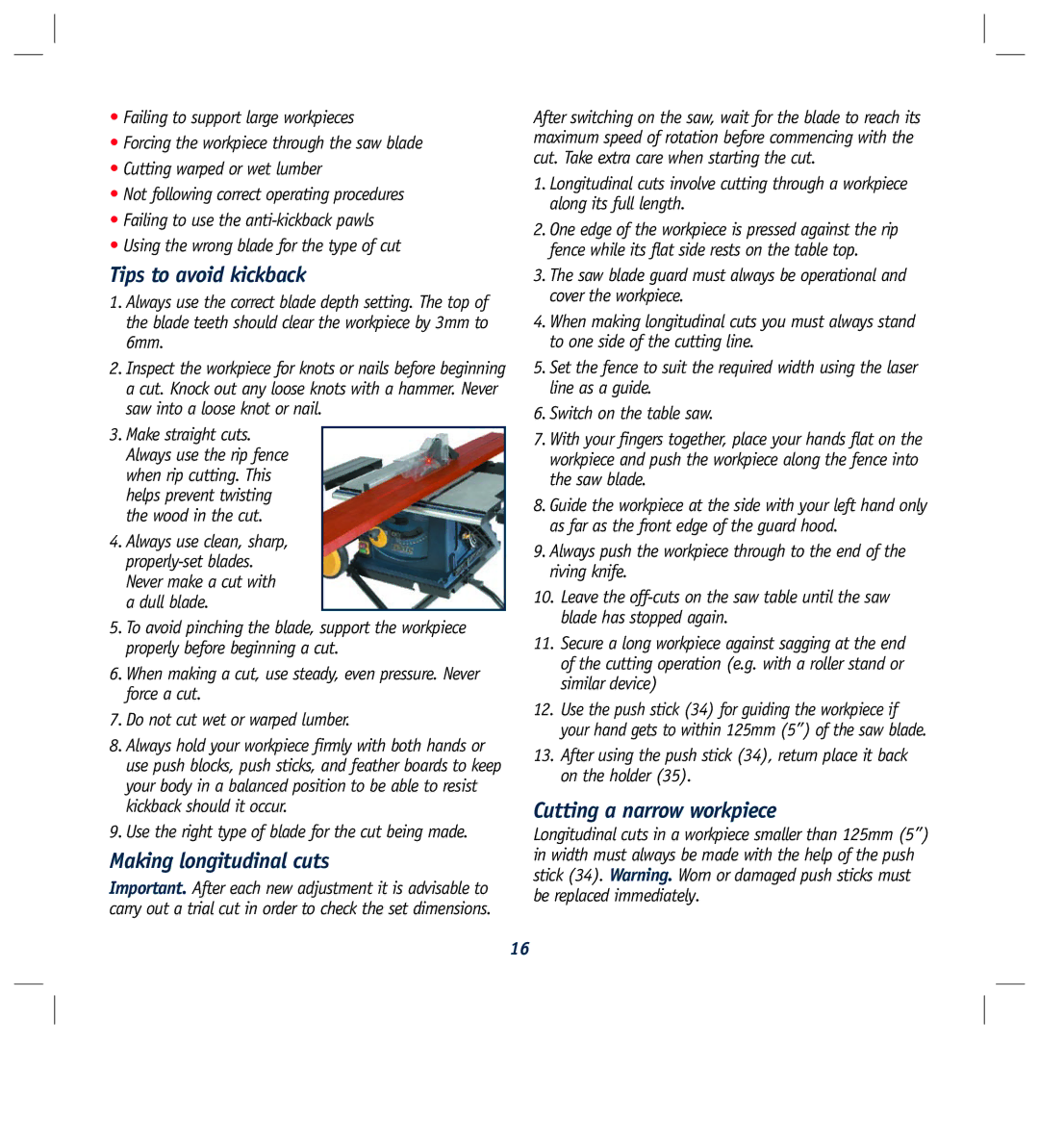
•Failing to support large workpieces
•Forcing the workpiece through the saw blade
•Cutting warped or wet lumber
•Not following correct operating procedures
•Failing to use the
•Using the wrong blade for the type of cut
Tips to avoid kickback
1.Always use the correct blade depth setting. The top of the blade teeth should clear the workpiece by 3mm to 6mm.
2.Inspect the workpiece for knots or nails before beginning a cut. Knock out any loose knots with a hammer. Never saw into a loose knot or nail.
3.Make straight cuts. Always use the rip fence when rip cutting. This helps prevent twisting the wood in the cut.
4.Always use clean, sharp,
5.To avoid pinching the blade, support the workpiece properly before beginning a cut.
6.When making a cut, use steady, even pressure. Never force a cut.
7.Do not cut wet or warped lumber.
8.Always hold your workpiece firmly with both hands or use push blocks, push sticks, and feather boards to keep your body in a balanced position to be able to resist kickback should it occur.
9.Use the right type of blade for the cut being made.
Making longitudinal cuts
Important. After each new adjustment it is advisable to carry out a trial cut in order to check the set dimensions.
After switching on the saw, wait for the blade to reach its maximum speed of rotation before commencing with the cut. Take extra care when starting the cut.
1.Longitudinal cuts involve cutting through a workpiece along its full length.
2.One edge of the workpiece is pressed against the rip fence while its flat side rests on the table top.
3.The saw blade guard must always be operational and cover the workpiece.
4.When making longitudinal cuts you must always stand to one side of the cutting line.
5.Set the fence to suit the required width using the laser line as a guide.
6.Switch on the table saw.
7.With your fingers together, place your hands flat on the workpiece and push the workpiece along the fence into the saw blade.
8.Guide the workpiece at the side with your left hand only as far as the front edge of the guard hood.
9.Always push the workpiece through to the end of the riving knife.
10.Leave the
11.Secure a long workpiece against sagging at the end of the cutting operation (e.g. with a roller stand or similar device)
12.Use the push stick (34) for guiding the workpiece if your hand gets to within 125mm (5”) of the saw blade.
13.After using the push stick (34), return place it back on the holder (35).
Cutting a narrow workpiece
Longitudinal cuts in a workpiece smaller than 125mm (5”) in width must always be made with the help of the push stick (34). Warning. Worn or damaged push sticks must be replaced immediately.
16
